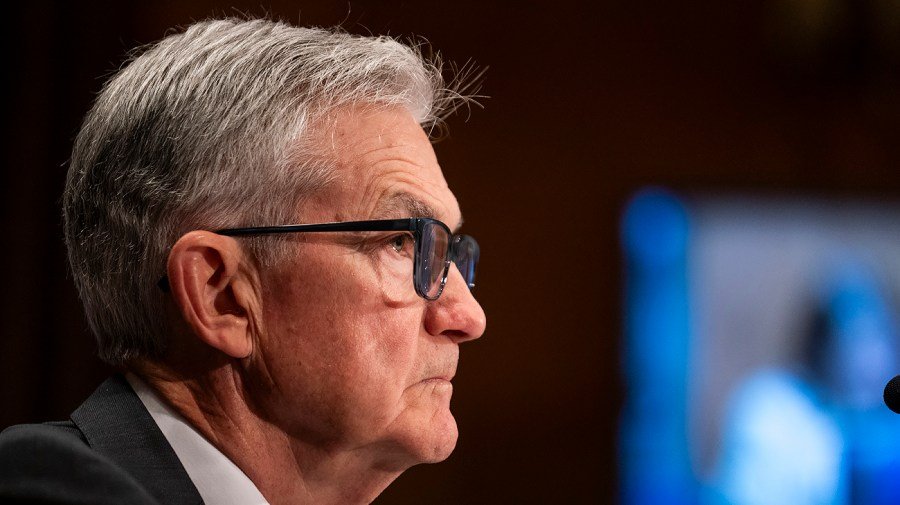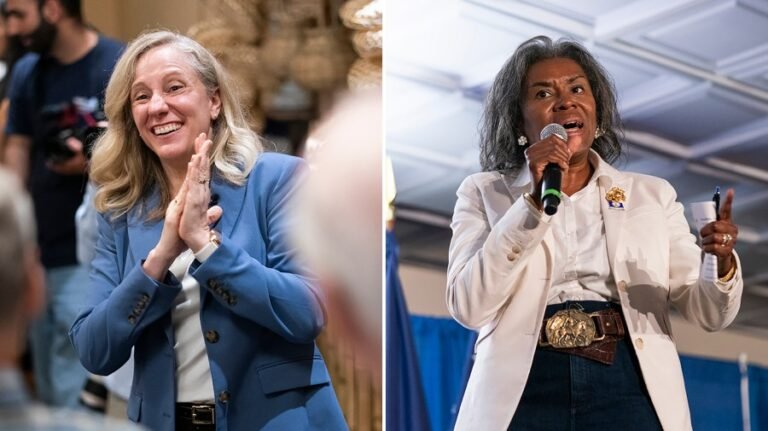
By stubbornly refusing to lower interest rates despite ample data urging him to do so, Fed Chairman Jerome Powell is committing his third major policy blunder in six years.
If he continues this tight-money path through the July 29 Fed meeting, “Too Late” Powell will go down as the worst Fed chair in history.
It’s not like Powell lacks stiff competition. In the 1970s, to boost Richard Nixon’s re-election run, uber‑partisan Arthur Burns kept rates too low for too long, triggering a dizzying inflation spiral and a decade-long stagflation.
In the 1990s, Alan Greenspan severely underestimated productivity gains from the tech boom, over-estimated inflationary pressures, and needlessly hiked rates — six times between June 1999 and May 2000. This spiked the federal funds rate to 6.5 percent, triggering the dot-com market crash and 2001 recession.
A whiplashed Greenspan then slashed rates to rock-bottom levels and held them at 1 percent for a full year — from June 2003 to June 2004 — well beyond what the recovery warranted. This ultra-cheap money fueled reckless lending, a massive housing bubble, and ultimately detonated the 2007–2008 financial collapse.
Greenspan’s successor, Ben Bernanke, should have seen it coming. But the Princeton don failed to grasp rising systemic risk in mortgage markets. His paralysis turned what might have been a contained correction into a full-blown global financial crisis — only intervening after Lehman Brothers fell, when it was already too late.
Now enters Jay Powell. Even though he leads the world’s largest economy, he is a lawyer, not an economist — an anomaly among Fed chairs. Since Arthur Burns, every Fed chair has held an economics degree, except for G. William Miller and Powell.
Miller was similarly unqualified and endured one of the most disastrous Fed tenures in recent memory spanning just 517 days before being replaced by the esteemed Paul Volcker on August 6, 1979.
Powell’s audition for “worst Fed chair” began shortly after his February 2018 appointment. Promising President Trump in the Oval Office a supportive posture to secure his nomination, Powell instead aggressively raised rates into the low-inflation, high-growth Trump economy.
Powell wrongly believed Trump’s tax cuts and tariffs would spark inflation — they didn’t. Nor did Powell understand that Trump’s efforts to deregulate the economy and reach energy independence — positive “supply shocks” in the macroeconomics vernacular — would provide positive deflationary benefits.
As Powell’s Fed hiked interest rates four times in 2018—despite muted inflation and strong labor market gains — economic momentum slowed sharply. According to the Fed’s own September Tealbook, most of the expected GDP slowdown — from over 3 percent to 1.5 percent — was due to Powell’s blunder.
Trump was justifiably outraged over Powell’s first blunder. It would cost the American economy hundreds of thousands of jobs and hundreds of billions of dollars in lost economic output and tax revenues.
After Trump left the White House in January 2021, Powell successfully lobbied Joe Biden for a second term. Throughout that year, the Powell-led Fed kept interest rates near zero, even as inflation surged past 5 percent by mid-year.
Embracing the Biden-Yellen line that inflation was merely “transitory,” the pandering Powell refused to act. Despite growing warnings from economists and business leaders, Powell waited until March 2022 — more than a year after inflation had begun accelerating — before implementing the first interest rate hike since 2018.
By then, the damage was done. The Fed was forced into one of the most aggressive tightening cycles in history — 11 hikes in 12 months — all to combat the inflation that Powell’s inaction had helped unleash.
Powell’s second major blunder here wasn’t just his late policy; it was his silent permissiveness. While a Democrat-controlled Congress passed over $2 trillion in unneeded and wasteful spending bills — in no small part to boost the Biden reelection campaign — Powell failed in his ethical duty to warn the White House and Democrat-controlled Congress that this spending would worsen inflation. Instead, he let loose monetary policy and partisan fiscal profligacy collide, accelerating the very inflation he would soon be forced to chase.
Today, with inflation returning to target and disinflation gaining traction, Powell is well on his way to his third blunder with his stubborn refusal to lower interest rates now. Powell seems incapable of recognizing that Trumponomics — driven by pro-growth deregulation, productivity-enhancing tax cuts, strategic tariffs, and America First supply chain policies — is again delivering strong GDP growth and low unemployment without fueling inflation, just as in Trump’s prosperous first term.
Powell’s misguided fixation on so-called tariff “uncertainties” as a rationale for “prudently” holding rates steady is particularly imprudent. Let’s remember clearly: during President Trump’s first term, we imposed tariffs strategically and aggressively — and the predicted inflation never materialized. Powell’s hesitation reflects a failure to learn from recent economic history, needlessly stifling growth, undermining American competitiveness, and harming millions of Americans.
At its next meeting July 29-30, the Fed must immediately begin cutting rates. If Powell won’t adjust course, he will indeed have earned the sobriquet of worst Fed chair.
Peter Navarro is White House senior counselor for trade and manufacturing.






